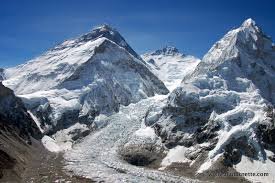Mount Everest — the world’s highest peak — has long been a symbol of ultimate adventure. Every year, hundreds of climbers flock to Nepal, hoping to achieve the dream of standing on the “Roof of the World.” However, concerns about overcrowding, safety risks, and environmental damage have pushed the Nepalese government to take strong action.
In a major move, Nepal is planning to introduce a new rule: climbers must first successfully summit a mountain over 7,000 meters within Nepal before being allowed to attempt Mount Everest. This proposed rule aims to enhance climber experience, improve safety, and protect Everest’s fragile environment.
In this blog, we’ll dive deep into everything you need to know about this proposed rule: its reasons, implications, challenges, and what it means for future Everest aspirants.
For more blog and news go through our website https://exploreallaboutnepal.com/
Why Is Nepal Planning This New 7,000m Summit Rule?
The decision is not sudden. Several growing concerns over the years have pushed authorities to consider stricter regulations:
1. Climber Safety
Many climbers attempting Everest have limited high-altitude experience. Lack of preparation has led to numerous accidents and fatalities.
By requiring a 7,000m climb first, Nepal hopes to ensure that climbers are properly acclimatized, technically skilled, and physically fit for the extreme conditions on Everest.
2. Overcrowding Issues
In recent years, Everest has witnessed dangerous traffic jams, especially near the summit during the peak season. Overcrowding causes delays, increases exhaustion, and raises the risk of altitude sickness and frostbite.
The new rule would filter inexperienced climbers and reduce unnecessary congestion.
3. Preserving Everest’s Environment
More climbers often mean more waste — abandoned gear, oxygen bottles, and even human waste have become serious environmental issues.
Better-prepared climbers could reduce environmental damage, ensuring sustainable mountaineering practices.
4. Upholding Nepal’s Mountaineering Reputation
As the guardian of the world’s tallest mountain, Nepal wants to maintain its prestigious mountaineering culture. Encouraging climbers to first experience other Himalayan giants would honor the spirit of true adventure.
How Will the 7,000m Rule Work?
According to early reports, here’s how the rule would be implemented:
Requirement: Climbers must successfully summit at least one mountain over 7,000 meters inside Nepal before applying for a permit to climb Mount Everest.
Verification: Climbers must provide official summit certificates issued by the Nepalese government or authorized organizations.
Enforcement: Expedition companies will need to submit proof of prior 7,000m summits when applying for Everest expedition permits.
Targeted Audience: The rule applies to all climbers, including both foreign and local mountaineers.
The government is still finalizing the details, but it is expected to be enforced in the coming climbing seasons.
Mountains in Nepal Above 7,000 Meters
If you are planning to attempt Everest, here are some notable 7,000m+ peaks you can summit first:
| Mountain | Height | Region |
|---|---|---|
| Baruntse | 7,129 m | Khumbu |
| Himlung Himal | 7,126 m | Manang |
| Pumori | 7,161 m | Khumbu |
| Nuptse | 7,861 m | Khumbu |
| Tilicho Peak | 7,134 m | Annapurna |
These mountains not only prepare climbers for high-altitude challenges but also offer breathtaking experiences in their own right.
Benefits of the New Rule
– Improved Success Rates
Experienced climbers are more likely to reach Everest’s summit safely.
– Better Prepared Climbers
With a 7,000m summit under their belt, climbers will be better acclimatized and technically skilled.
– Less Traffic Jams
Reducing the number of inexperienced climbers could ease congestion, especially near the Death Zone.
– Enhanced Rescue and Emergency Management
Fewer accidents mean rescue teams can manage emergencies more effectively.
– Protecting Nepal’s Natural Treasures
Environmental conservation will benefit from more responsible, trained climbers.
Criticisms and Challenges
While the move is widely praised, it does face some criticisms:
Increased Costs: Climbing an additional 7,000m peak adds significant expenses for climbers.
Longer Preparation Time: Climbers must plan more than one expedition, possibly over multiple seasons.
Impact on Tourism: Some fear it might discourage new climbers, impacting Nepal’s economy that relies heavily on tourism.
Implementation Challenges: Ensuring strict verification and preventing fake summit claims will require robust management.
Final Thoughts
Nepal’s new 7,000m summit rule for Everest aspirants is a bold and necessary step toward responsible and safer mountaineering.
Although it may make Everest even more challenging to attempt, it also restores the mountain’s sanctity and encourages climbers to respect the journey as much as the destination.
If you dream of standing atop Everest, start planning now — train harder, gain real high-altitude experience, and prepare for the adventure of a lifetime.
Remember: In mountaineering, preparation isn’t just important — it’s the key to survival.
FAQs About the New 7,000m Rule
Q1: When will the new rule be enforced?
A: The government is expected to implement the rule soon, possibly within the next one or two climbing seasons.
Q2: Does this apply to climbers who have already climbed Everest?
A: No, it is aimed at first-time Everest aspirants.
Q3: Will climbing mountains outside Nepal count?
A: No, climbers must summit a peak above 7,000 meters inside Nepal.
Q4: Which peaks are recommended for preparation?
A: Baruntse, Himlung Himal, Pumori, and Nuptse are popular choices.
A Final Note
If you’re serious about climbing Everest, this rule shouldn’t discourage you. Instead, see it as an opportunity to become a better mountaineer.
Climbing a 7,000m peak will not only boost your skills and stamina but also gift you unforgettable experiences across Nepal’s stunning Himalayan ranges.
Prepare right, respect the mountains, and your dream of standing atop Everest will be within reach.



